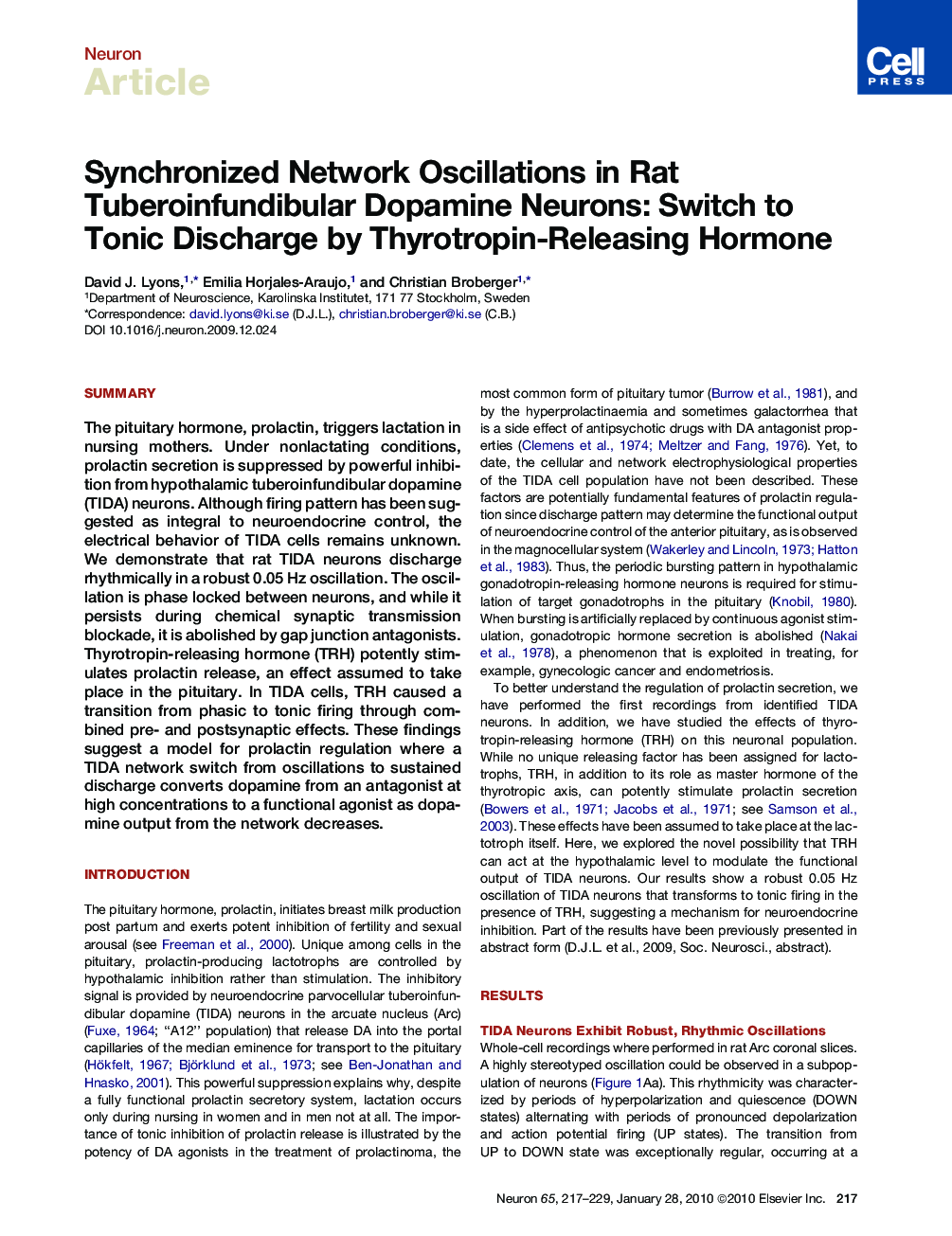| Article ID | Journal | Published Year | Pages | File Type |
|---|---|---|---|---|
| 4321611 | Neuron | 2010 | 13 Pages |
SummaryThe pituitary hormone, prolactin, triggers lactation in nursing mothers. Under nonlactating conditions, prolactin secretion is suppressed by powerful inhibition from hypothalamic tuberoinfundibular dopamine (TIDA) neurons. Although firing pattern has been suggested as integral to neuroendocrine control, the electrical behavior of TIDA cells remains unknown. We demonstrate that rat TIDA neurons discharge rhythmically in a robust 0.05 Hz oscillation. The oscillation is phase locked between neurons, and while it persists during chemical synaptic transmission blockade, it is abolished by gap junction antagonists. Thyrotropin-releasing hormone (TRH) potently stimulates prolactin release, an effect assumed to take place in the pituitary. In TIDA cells, TRH caused a transition from phasic to tonic firing through combined pre- and postsynaptic effects. These findings suggest a model for prolactin regulation where a TIDA network switch from oscillations to sustained discharge converts dopamine from an antagonist at high concentrations to a functional agonist as dopamine output from the network decreases.
► Recordings from tuberoinfundibular dopamine (TIDA) neurons were obtained ► TIDA cells oscillate in a rhythmic 0.05 Hz oscillation ► TIDA cell oscillations are phase locked as a gap junction-coupled network ► Thyrotropin-releasing hormone causes a switch from phasic to tonic TIDA cell firing
